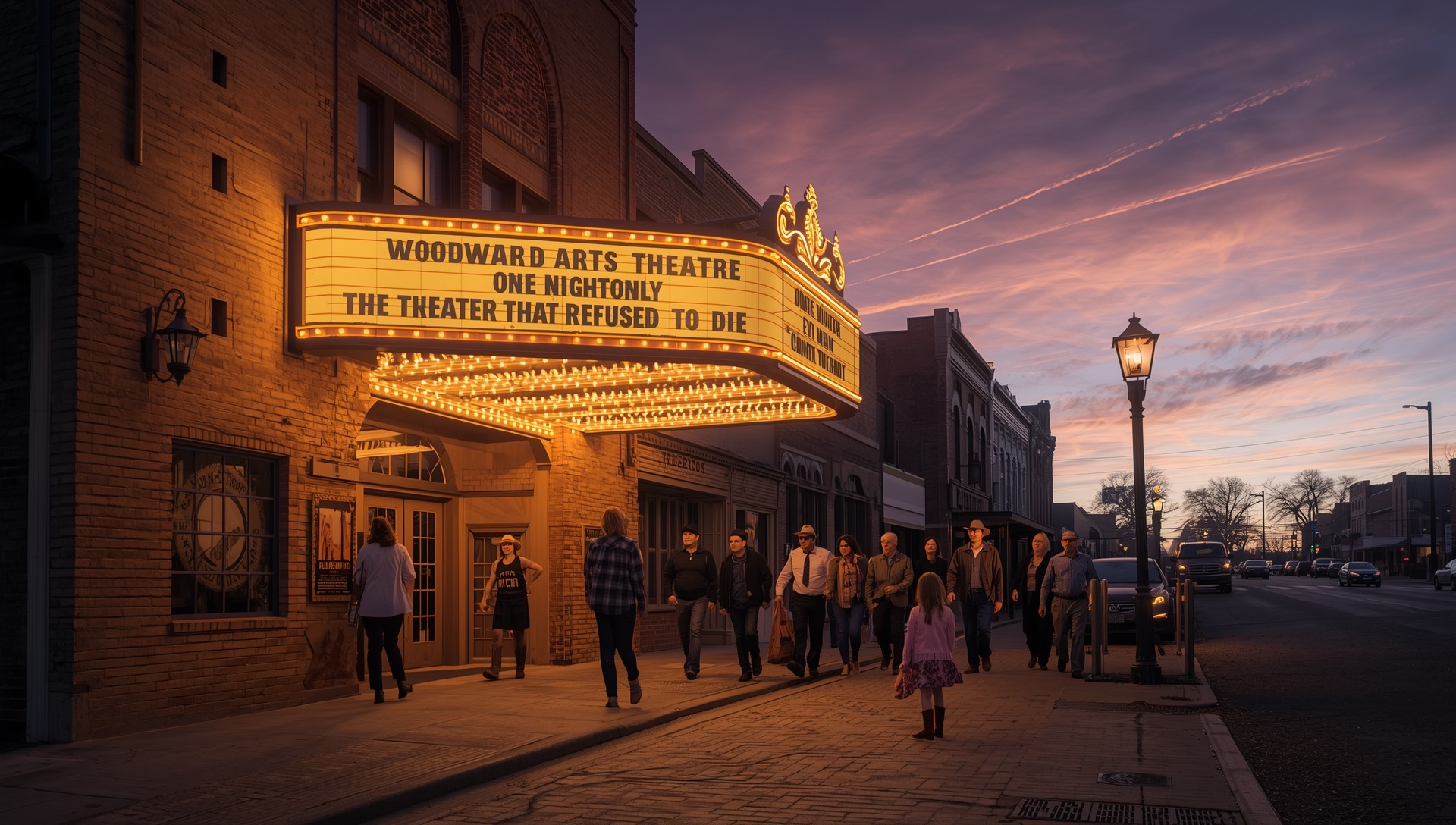Woodward Shoutouts
Archives
The Theater That Refused to Die
SIGN UP FOR OUR NEWSLETTER
You ever meet a building with more gumption than most folks you know? I have. It’s got bricks, velvet seats, and one ornery spirit that just won’t quit. That building? The Woodward Arts Theatre. But around here, we just call it The Theater. Like you’d call your grandpa Pawpaw, even if he once wrestled a bear in 1953 and doesn’t like to talk about it.
I swear to you, if this place could talk, it’d cuss, cry, and recite Shakespeare all in the same breath. She’s been shot at by history more times than a tin can at a backwoods barbecue. Let me take you back.
ACT I: Born into the Storm
It was November of 1929 — a month after the stock market took a nosedive off a whiskey-soaked balcony. Banks were belly-up, folks were stuffing cash in mattresses, and yet… someone in Woodward said, “You know what this town needs? A fancy-pants movie palace with Italian arches and stage lights.”
And just like that, the Woodward Theatre opened her big red curtains and welcomed the world with Illusion starring Buddy Rogers. Fancy, right?
She had dressing rooms, a balcony, and real-deal velvet seats. She was the belle of Main Street — high heels, chandelier, and all.
ACT II: Tougher Than the Times
When the Great Depression rolled in like a dirt storm with bad manners, other theaters crumpled. But not her. Nope. She stayed lit up like a promise. Folks came to her with empty pockets and heavy hearts, needing laughter, music, or maybe just to sit still and feel okay for a while.
Then came 1947. You know the one — the tornado that smacked Woodward so hard it left the town dazed for decades. It took down over 100 folks and flattened half the place. And wouldn’t you know it, there were folks who say they took cover inside that theater when the sky turned mean.
If that building were a person, she’d be the tough old woman at church who survived three husbands and still brings cobbler to the potluck.
ACT III: Fading into Dust
By the ‘60s and ‘70s, televisions crept into homes, and The Theater got quiet. Lonely. One of her ceiling tiles whispered to the other, “Reckon they’ve forgotten us?”
She nearly went dark. Doors locked. Paint peeled. Main Street sighed.
But then, out of the Oklahoma dust, a bunch of folks — locals, dreamers, and one retired science teacher with a hammer — said, “Nope. Not today.”
They started showing up. With buckets of paint. With old Playbills and new prayers. They didn’t have millions. They had $120,000, calloused hands, and hometown stubbornness . And in 1981 — Lordy, I get goosebumps — she reopened. Alive again. Glowing like a lightning bug in a Mason jar.
ACT IV: The Big Lesson
Today, she ain’t just a building. She’s a memory machine. A place where your neighbor’s daughter plays Juliet and the mayor buys popcorn like the rest of us. A place that reminds us what it means to gather.
She outlived radio, recessions, reruns, and rerouted highways. And when the world seems too loud or too fast, she’s still there — a stage in a small town, whispering, “Come sit down. Let me tell you a story.”
🎭 Moral of the Tale
It ain’t the size of the town in the fight — it’s the size of the fight in the town.
Or, put simply:
|

